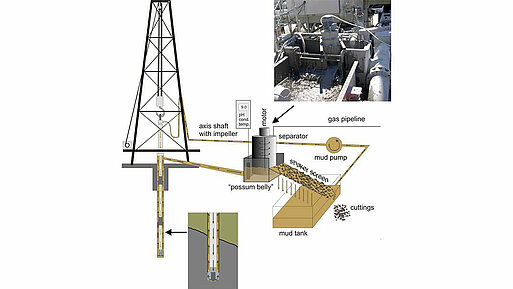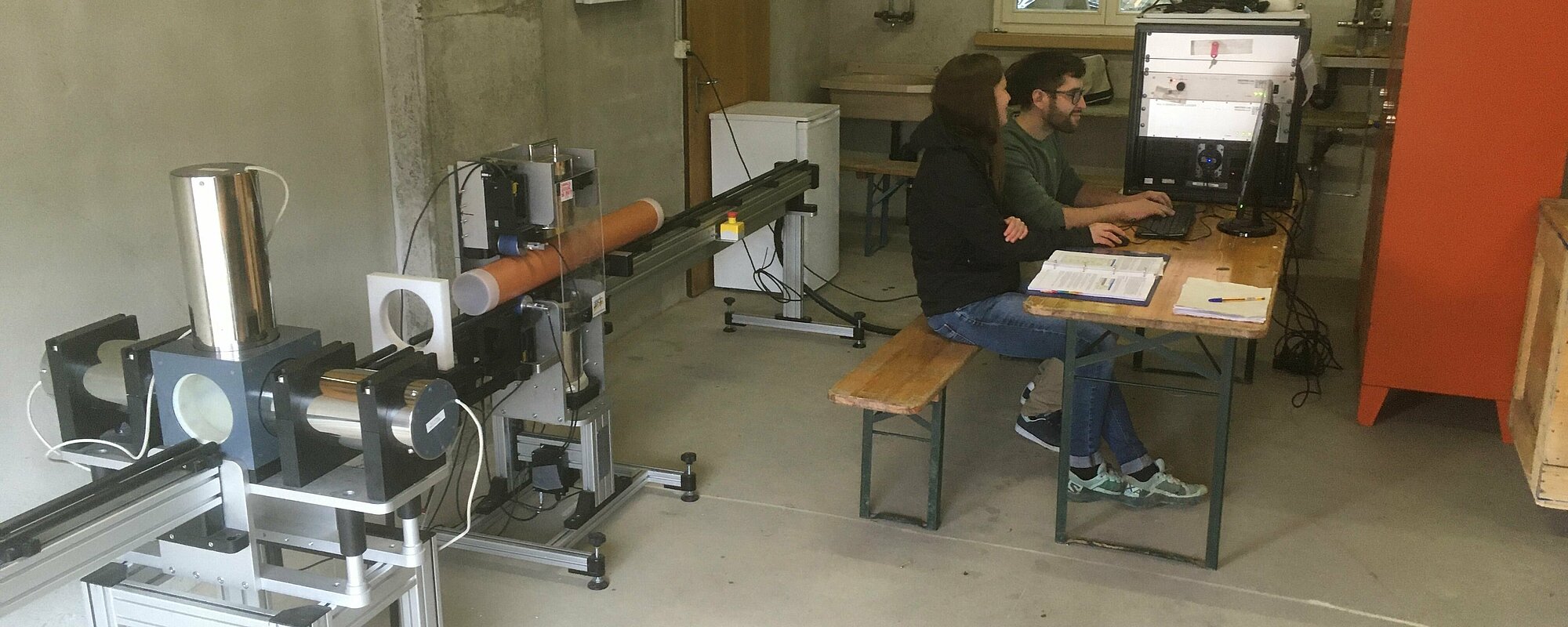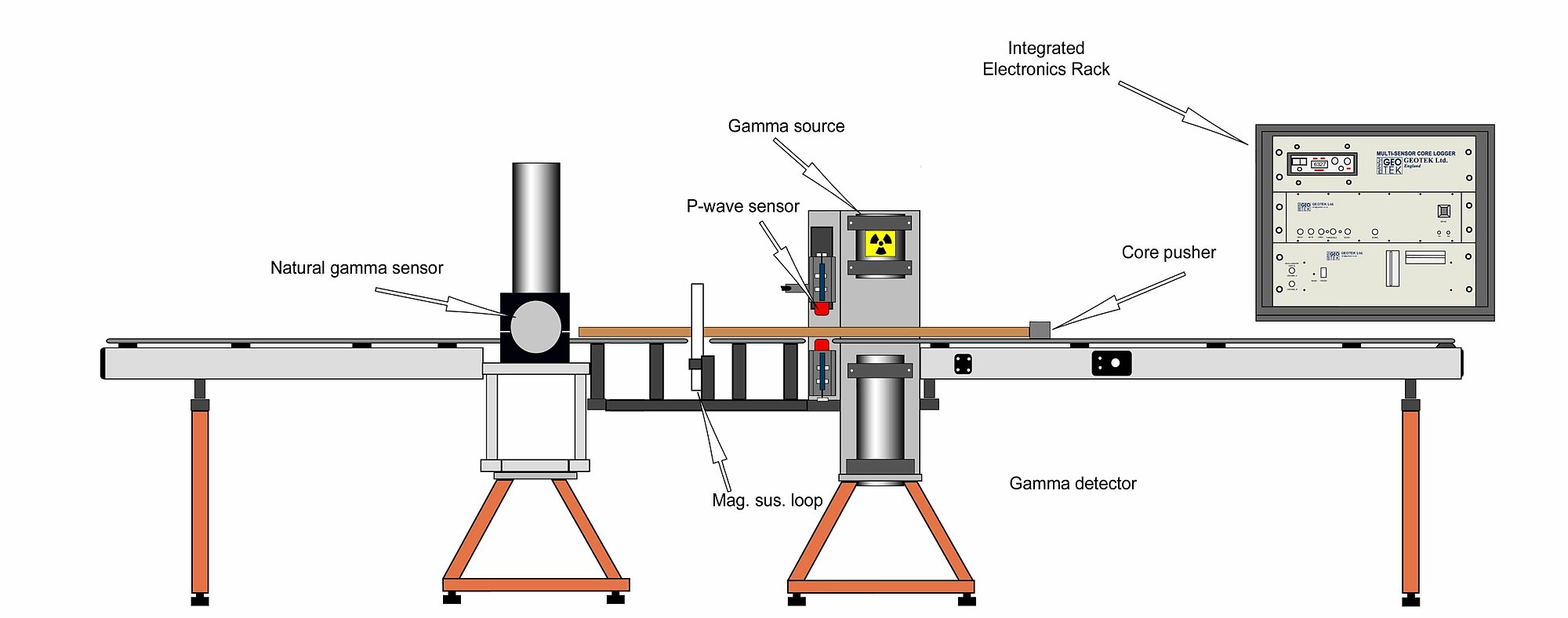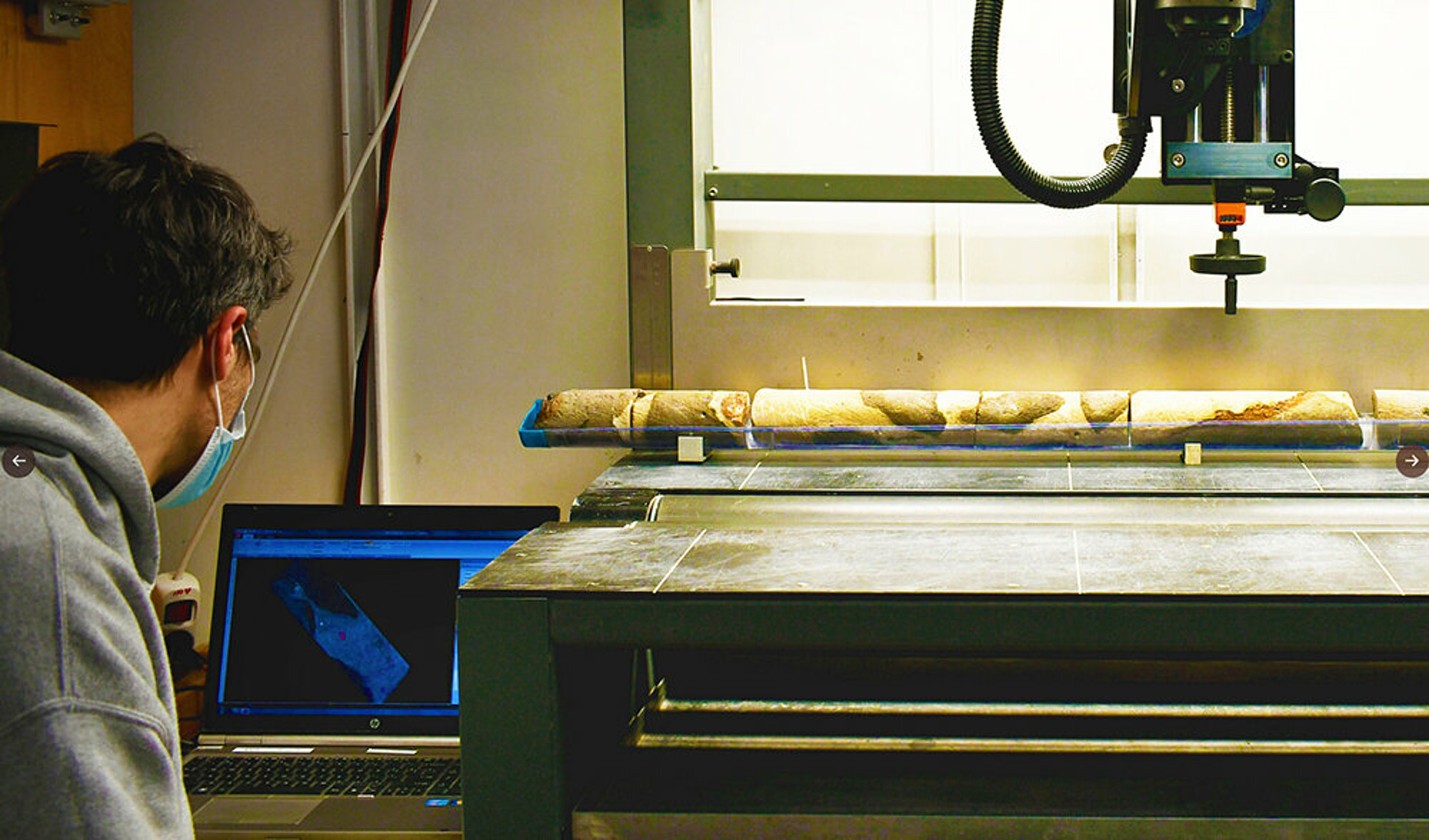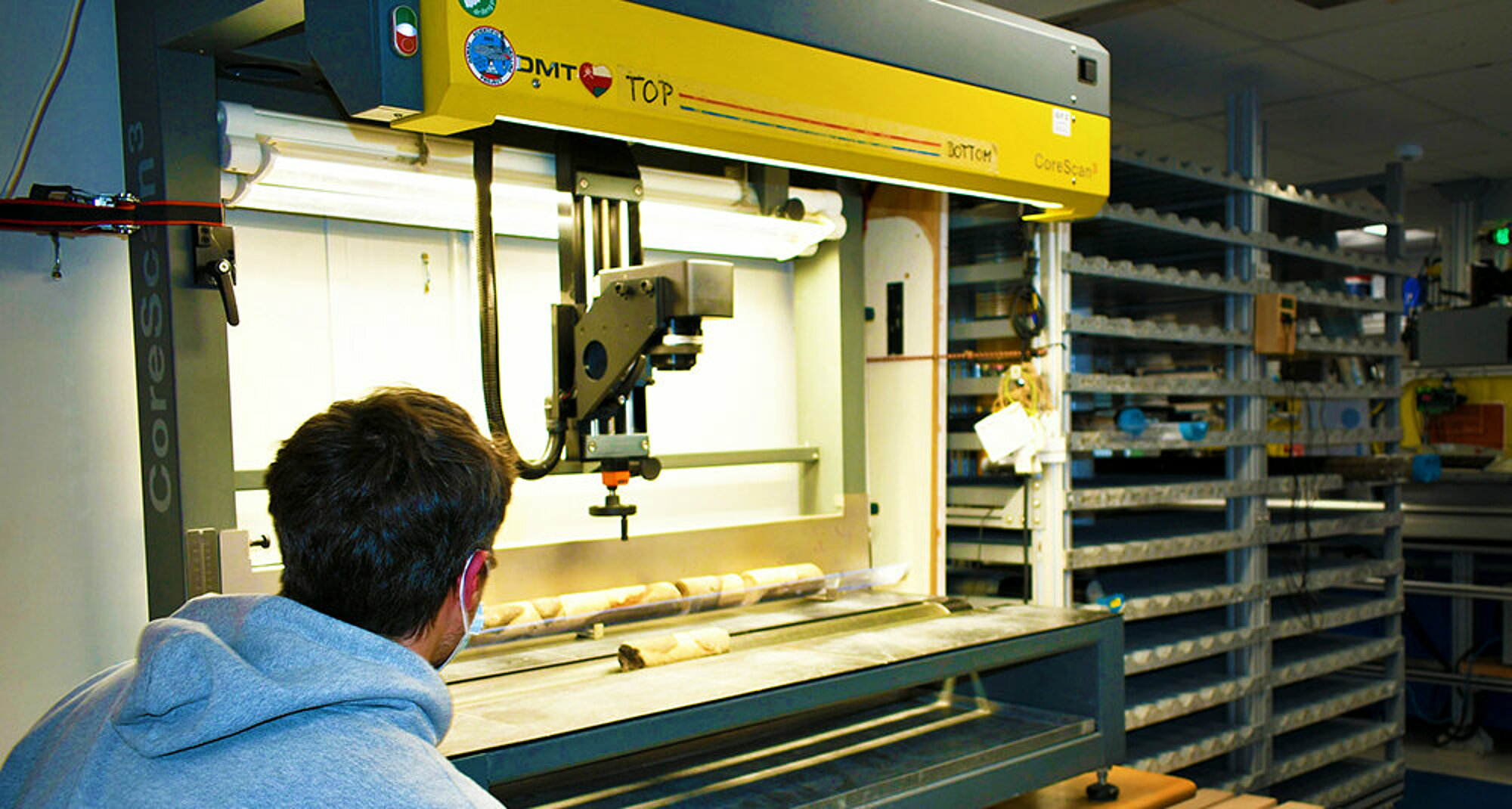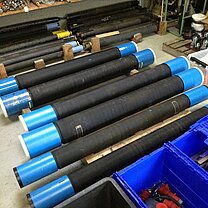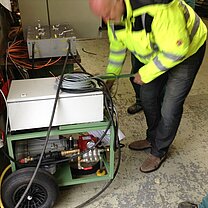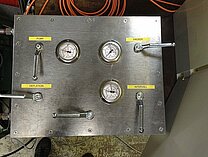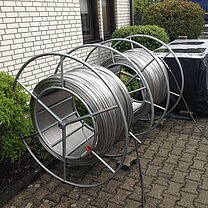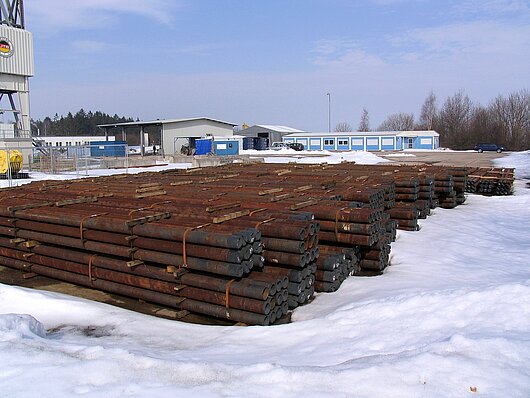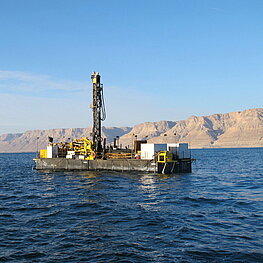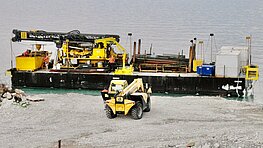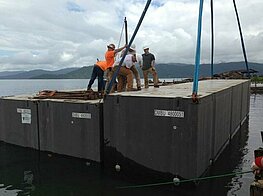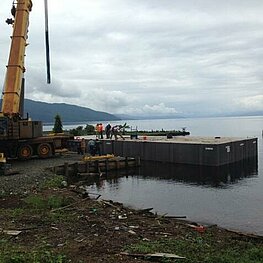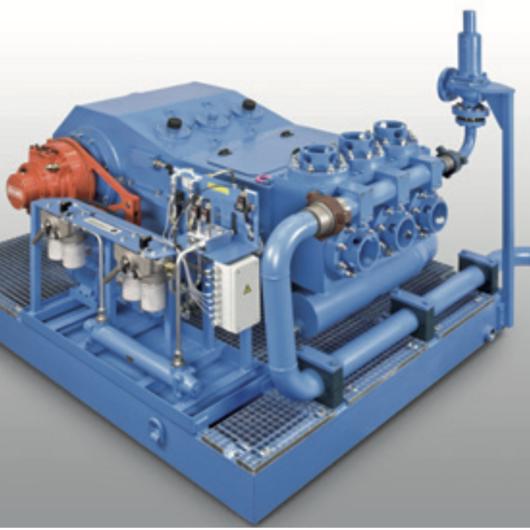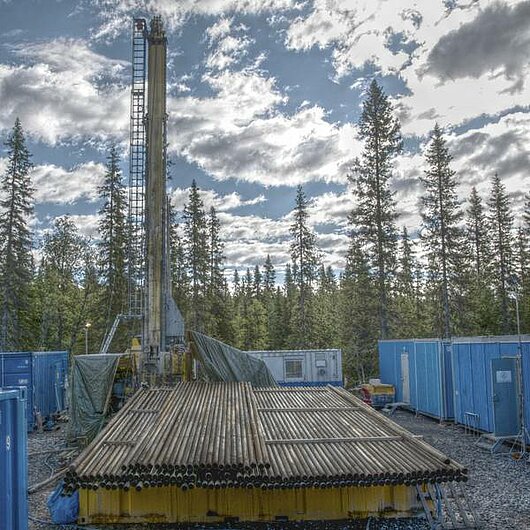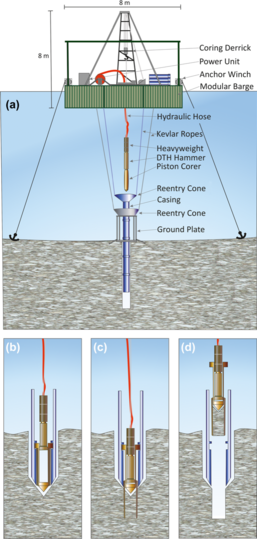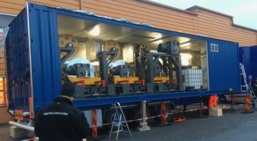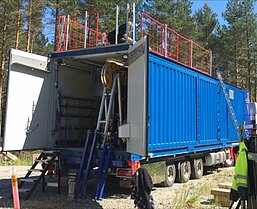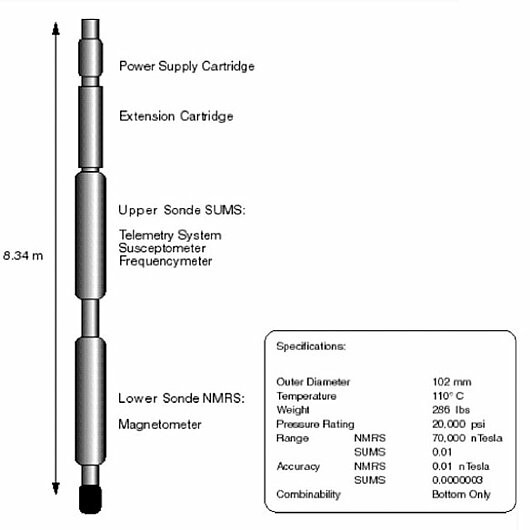icdp Equipment
...our surface instrumentation and more
ICDP granted projects can utilize the OSG equipment pool and the services of the ICDP Operational Support Group. Here you find an overview of the diverse instruments and tools available. These are mainly powerful instruments for online gas analysis and for measurements on cores but also equipment that was initially accquired for specific drilling projects. Last but not least you will find links to usefull special equipments not managed and operated by OSG but which are offered by ICDP partners.
Here you find specific information about the OSG downhole logging equipment.
Gas Monitoring
Online Gas Monitoring OLGA
Continuous mud gas logging during drilling as well as offline mud gas sampling are standard techniques in oil and gas exploration, where they are used to test reservoir rocks for hydrocarbons while drilling. ICDP’s Online Gasmonitoring OLGA extends this technique for scientific drilling in hydrocarbon and non-hydrocarbon formations in order to sample and study the composition of crustal gases. Online monitoring of gas from circulating drilling mud has been proven a reliable and inexpensive technique for obtaining information on the composition and spatial distribution of gases at depth-in real time in several ICDP (and IODP) projects.
OLGA Online-Gasmonitoring is a three-step process that includes i) gas release from the formation, ii) gas extraction at the surface and iii) real-time gas analysis
Gas release from the formation: Drilling mud gas that circulates in the borehole comprises air and gaseous components that are mechanically released as the drill bit, including components present in the pore space of the crushed rock and gas entering the borehole through permeable strata either as free gas or, more likely dissolved in liquids. Continuous inflow of fluids in the borehole along the entire borehole wall is hampered through the rapid formation of mud-cake that covers the borehole wall and acts as a seal.
Gas extraction at the surface: Back at the surface, a portion of the circulating mud is admitted to a mud gas separator and gas dissolved in the drilling mud is extracted mechanically under slight vacuum. The separator is composed of a steel cylinder with an explosion-proof electrical motor on top that drives a stirring impeller mounted inside the cylinder. The gas separator is installed as close as possible to the outlet of the mudflow line, either in the "Possum belly" above the shaker screens or in the mud ditch, in oder to minimize air contamination and degassing of the drill mud before gas extraction. A small membrane pump is used to build up vacuum and to pump the extracted gas into a laboratory trailer, which should be installed not more than a few tens of meters away from the gas separator.
Real-time gas analysis: N2, O2, Ar, CO2, CH4, He, and H2 are determined by a quadrupole mass spectrometer (QMS). A complete QMS analysis with detection limits between 1 and 20 ppmv (parts per million by volume) is achieved with this setup after an integration time of less than 30 s. However, a sampling interval of one minute is mostly chosen to reduce the amount of data produced. Hydrocarbons (CH4, C2H6, C3H8, i-C4H10, and n-C4H10) are analyzed at 10 min intervals with an automated standard field GC, which is equipped with a flame ionization detector. Detection limits for the hydrocarbons are at about 1 ppmv. Gas samples for further studies e.g. of isotopes are taken automatically when a given threshold level at the QMS is exceeded.
Geophysical Core Logging
Multi-Sensor Core Logger MSCL
ICDP provides a multi sensor core logging (MSCL) device for initial measurements of petrophysical properties of whole round hard rock and soft rock cores with or without liner. Maximum core diameter is 10 cm, maximum length of a core section is 1.5 m. The MSCL is equipped with sensors for p-wave verlocity, magnetic susceptibility, and spectrum gamma (U, Th, K). Avaliable is furthermore a radioactive source (137Cs) and a detector for gamma density. The radioactive source will be provided and shipped only in justified exceptional cases.
Contact:
Thomas Wiersberg
Tel.: +49 331 6264 1081
t.wiersberg(at)icdp-online.org
Optical Core Scanning
The instrument allows optical high-resolution scanning of whole or slabbed hard rock drill cores and soft rock half cores in diameters from 4 to 22 cm and maximum length of 1 m. The device can also be used to scan cuttings and other sample specimens in close-up views. Additionally, the DMT Core Scan3 is capable to acquire core box overview scans. Image sizes are up to 25 MByte with a resolution of 5 - 10 pixel/mm = 127 - 254 dpi.
ICDP projects can apply for this instrument in the full proposal and rent it for a small maintenance fee and shipping costs. Training on the instrument is part of the obligatory Sample & Data Management Course, which is taking place 3 - 6 month ahead of the operational phase.
Contact:
Katja Heeschen
Tel.: +49 331 6264 28938
k.heeschen(at)icdp-online.org
Conditions of Use
- ICDP projects may request equipment as part of the full proposal. Any costs incurred for transportation and, if applicable, travel expenses for training and set-up should be included in the budget for the full proposal.
- Because the equipment is limited, we encourage PIs to contact us promptly as soon as they have a specific need for equipment. Equipment will be provided on a first-come, first-served basis.
- Personnel to operate and maintain the equipment on site must be provided by the project. There is no charge for use, except for transportation costs, operator travel expenses to attend training (if required) and OSG travel cost for assembly on-site.
- Prior to deployment, on-site operators will be trained as appropriate. This is ideally done at GFZ a few weeks before the spud-in, e.g. in combination with the mDIS course.
- Equipment will be provided based on a written loan agreement to be signed by both involved parties (ICDP-OSG as well as the project).
- OLGA will be provided as part of a scientific collaboration, i.e. ICDP personell will be (co-) author of any publication resulting in the use of OLGA.
Other icdp Equipment
Hydrofrac System
This system is an ICDP owned wireline deployed Hydrofrac Stress Measurement System (from Solexperts/MeSy) using inflatable straddle packer sondes. It includes a high pressure pump, an HF control panel, a set of 4 coiled tubing drums to reach a maximum depth of 3000 m, cable clamps and necessary special auxiliaries. This HFSM system is currently stored at the KOYNA project at Karad, India. If not required at this site, it is available for HF tests in other projects with suitable boreholes (possible hole diameters: 8.5 inch and 6.25-6.75 inch, T < 90°C). Please consider a subsantial lead time for mobilisation of at least 6-9 months.
The equipment needs to be operated by experienced personnel, either trained precedingly by or directly from Solexperts.
Contact: icdp-logging
Core Drill String
5 1/2" Wireline-Coring Drill String, length: 5000 m, 650 pipes
Service provision through a drilling service contractor.
Contact: icdp-drilling
Modular Barge
ICDP owns a modular barge (Damen Modular Pontoon 2407) consisting of six 40-ft container-size elements that can be tightly clamped together once in waters. The dimensions and capacity of this drilling barge are: length 24.3 m, beam 7.3 m, deck space 180 m2, deck loading 6.8 t/m2, draught 0.4 m (empty). It was formerly used for the icdp DLDS - deep lake drilling system. Assembly and operation of the barge requires for experienced personnel, preferrably a drilling crew familiar with lake drilling operations.
The system is currently based at University of Minnesota in Minneapolis, USA.
Contact: Anders Noren, Uli Harms
Triplex Pump
Flushing pump typically for geothermal wells (Triplex BT 60-70). Compact high-performance piston pump for drilling fluids with working pressures up to 350 bar, pump rates of max. 2.7 m3/min, and fluid temperature up to 90 °C.
Contact: icdp-drilling
Partner Equipment
Riksriggen Drill Rig
"Riksriggen" is the Swedish national research infrastructure for scientific drilling with a crawler mounted Atlas Copco CT20C wireline diamond core-drilling rig as its central component. The drill rig has depth capacity of 900 m in PQ (123 mm hole, 85 mm core diameter), 1600 m in HQ (96 mm hole, 63 mm core diameter) and 2500 m in NQ (76 mm hole, 48 mm core diameter) size. The research infrastructure also contains a comprehensive suite of surface and downhole equipment (including BOP, wireline packers, fishing equipment) and slimhole logging tools. Drilling engineering, planning and conducting of the operations is part of the service. Please contact the infrastructure for more information or visit www.riksriggen.se.
"Riksriggen" is available at cost price to scientific drilling projects (not limited to Sweden or Swedish PIs). The infrastructure is located at Technical Geology, Lund University, Sweden and funded by the Swedish Research Council (Vetenskapsrådet).
Contact: Jan-Erik Rosberg (head of the infrastructure)
Hipercorig
The undisturbed recovery of continuous, long cores from deep lake sediment remains an engineering and cost challenge. In order to provide a tool that closes the gap between expensive commercial wireline diamond coring and hand-operated piston cores, Hipercorig was developed and tested. This environmentally friendly coring tool and modular barge system is centered around a down-the-hole hydraulic hammering of an advanced piston coring system. It is suitable for water depth of up to 200 m waters in lakes or estuarine environs and is capable to retrieve high-quality core from up to one-hundred meters sediment depth. The whole system in packed in four 20-foot-containers including outboard motors and boats and can be operated by a crew of a minimum of five experienced people.
More information is provided by Harms et al: Sci. Dril., 8, 1–13, 2020
LTU Stress Trailer
The LTU stress trailer is a wireline-activated borehole equipment that includes straddle packers with an electric imager, designed to conduct hydraulic stress measurements in slim boreholes. The stress trailer has a maximum depth capacity of 3 km and can conduct tests in 3 borehole sizes (NQ, HQ, and PQ, or 76, 96, and 123 mm, respectively). It is mounted in a 40-foot container on a mega-trailer and includes 3 winches, low- and high-pressure water hydraulics, manifold, water tanks, borehole equipment and heater for measurements in cold climate. Maximum system pressure on the surface is 650 and 1378 bar, respectively. Maximum testing temperature is 85°C. The weight of the system is 40.5 tons.
The straddle packers are used to pressurize the borehole section and eiter generate a new fracture or open a pre-existing fracture. Imager data is used to identify potential de-coupling zones and to measure the orientation of tested fractures. This radically reduced the uncertainty in data interpretation. The data acquisition system is digital but data is also converted to analogue signal to surface. At surface, approximately 40 data streams (electrodes, pressure sensors, orientation sensors, temperatures) from the borehole are integrated with data from surface sensors (pressure sensor, flow-meter, length, speed, cable tension) using Labview. These files are then converted to Matlab for data interpretation.
The "LTU stress trailer" is available for scientific and commercial projects. The infrastructure is located at the Division of Geosciences and Environmental Engineering, Luleå University of Technology (LTU), Sweden and was funded by the Swedish Research Council (Vetenskapsrådet) and LTU.
Contact: Maria Ask (head of the infrastructure)
The LTU Stress Trailer is available only as service from LTU and is not operated by OSG.
Paleomagnetic Sonde
The Paleomagnetic Logging Sonde (GHMT) of the University of Delft is a combination of a 3-component magnetometer and a magnetic susceptibility sonde.
The Paleomagnetic sonde is available only from University of Delft and is not operated by OSG. Please consider subsantial costs and also time to re-mobilise the tool (presumably 6-9 months).
For details and contact please look here.



